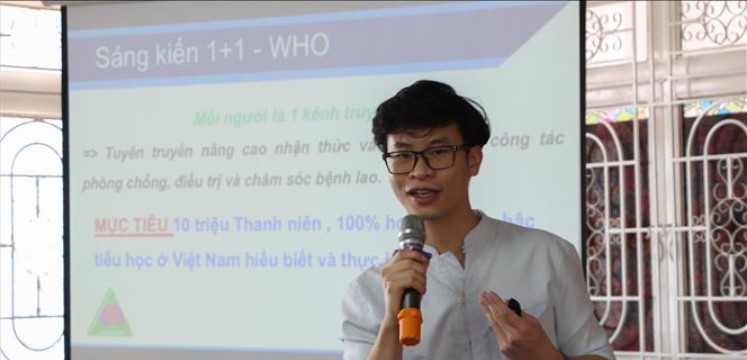
23 Mar Increased education to reduce stigma has aided Vietnam’s decline in TB cases
Erasing the stigma against a disease is important in eradicating the disease itself.
Vietnam has one of the highest burdens of tuberculosis (TB) in the world and it is estimated that this infectious disease kills approximately 17,000 people per year. While rates of TB have decreased in the past decades, it is reported that only 52% of people with TB in Vietnam are provided treatment. The reasons for this are two-fold but go hand in hand. Firstly, poverty plays a large role in lower- and middle-income countries like Vietnam. Despite people from all ranks of society being susceptible to the disease, the poor are at greater risk because they are in greater contact with those suffering from TB. Secondly, stigmatization hinders TB patients from seeking adequate healthcare. Historically in Vietnam, and still, to this day, TB has been viewed by many people as an incurable disease, so TB patients often found themselves outcast by their community. If Vietnam wants to achieve the target set by the WHO to eliminate TB by 2035, they will not only have to fight barriers of accessibility but also barriers of social determinants.
Vietnamese researchers, like AIGHD PhD student Hai Nguyen, are working hard towards better education surrounding TB. Hai is involved in programs through hospitals in Vietnam that raise awareness of TB prevention and control. The Youth Society Against TB in Vietnam brings doctors and researchers to schools to explain the symptoms of TB and the similarities between TB and Covid-19. Last year, Hai and his colleagues reached 15 schools from elementary age to university. “We told them that we want each of them to give small presentations to their parents, friends, and neighbours about TB. If anyone has the 5 symptoms provided on the list that we taught them, then tell them to go to the hospital for treatment.” It is educational activities like these that will contribute to the achievement of ending TB by 2035.
By increasing access to education, experts in TB research believe barriers like stigma will disappear. This will then lead to increased notification and increase rates of treatment for TB, ultimately reducing transmission. In a recently published paper, Hai and colleagues discovered a drop in rates of TB in Vietnam after analyzing data from the national TB prevalence surveys conducted in 2007 and 2017. In the second study, researchers used state-of-the-art screening procedures and diagnostics that were not available in the 2007 study. In order to make a direct comparison with the 2007 survey, Hai and colleagues analyzed data from the second survey using screening diagnosis methods similar to those used in the original study. After analyzing this new data, they found that the burden of smear-positive TB, which is more infectious, decreased by 53%, and the overall TB burden dropped by 37% over the 10-year period. This decrease in TB infections is a wonderful outcome for Vietnam.
“It’s a really positive message for the whole world that TB burden in Vietnam and in the world has decreased with joint effort from expert and healthcare staff. We have cut TB down and the idea that TB will be eliminated by 2035 is possible if we keep up with what we are doing right now and continue to add more technology and to develop a new vaccine and new drugs,” Hai explains.
The moral of these findings is to invest more in new and alternative diagnostic methods in order to identify all patients with TB and treat them promptly to ensure that TB is eliminated by 2035. By reducing barriers to access, barriers to education, and stigma, Hai is confident that Vietnam is on the path to eradicate tuberculosis.
Congratulations to Hai and his colleagues for their incredible work and efforts in educating the next generation of curious minds.
To read the entire publication, visit the CDC website.
To watch Hai in an educational music video explaining the symptoms of TB, click here.


